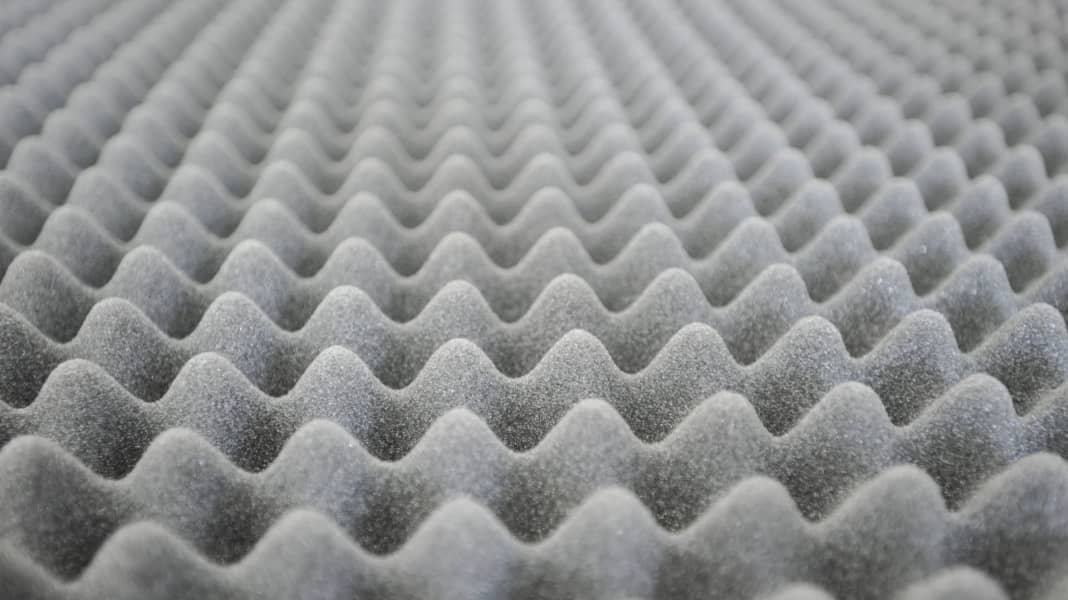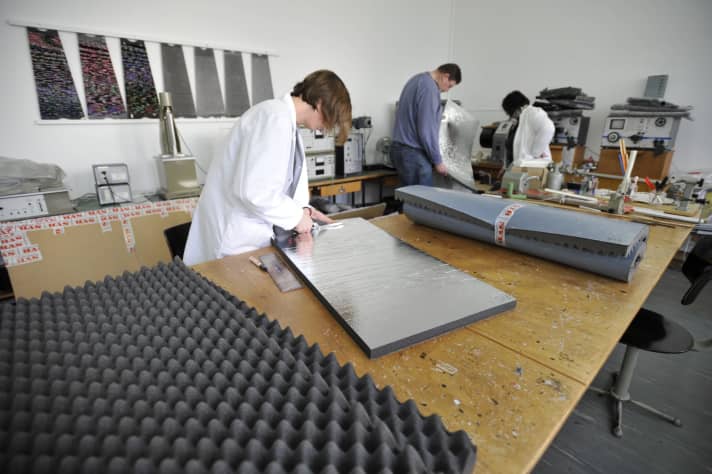

If you ask motorboat owners what bothers them most about their hobby, the answer is often: the engine noise. It is not for nothing that for many boaters relaxation only begins when the engine is switched off and peace and quiet returns. But you can do something about the roaring noise from the engine compartment.
The "tranquilliser" par excellence is called "sound insulation". Fitted to bulkheads and engine room ceilings, modern insulating material holds back the sound waves and reduces the noise in the boat to a tolerable level.
So if you want to ensure more "quiet in the boat" and have had enough of the old, crumbly insulation, you can do something about it. However, before embarking on the adventure of "new engine compartment insulation", a few physical and acoustic basics should be clarified. Because only those who know the acoustic conditions and problem areas on their boat can select the optimum insulation material.
The source of all evil and the reason why we go to all the labour and expense involved in new engine sound insulation is therefore, as mentioned, the "noise" on board, especially the "engine noise". The volume at which a sound mutates into noise is, of course, a matter of taste.
A self-confessed cigarette pilot will describe the roaring sound pressure of its 1500 horsepower as a "lovely whisper", while a sensitive visitor on the family boat will call the chugging 55 hp diesel a "hell of an engine".
But no matter how loud and powerful an engine may be, the physics of sound waves is the same for all combustion engines. They are created by the explosive combustion of the fuel in the engine, whereby the wavelength (frequency) depends on the design and speed. The sound waves of high-speed turbocharged engines are shorter than those of low-speed, large-volume naturally aspirated diesel engines.
As far as the different types of sound are concerned, a distinction is made between airborne sound and structure-borne sound. The former is of medium to high frequency and propagates through the medium of air. It can therefore also be reduced with the help of insulation panels on the bulkheads of the engine compartment, which effectively trap the sound waves.
Structure-borne sound, on the other hand, is, as the name suggests, transmitted via solid bodies.
In the case of the engine, it is the vibrations that reach the hull of the boat via the foundation. These low-frequency emissions from the engine can only be minimised by the best possible mass balance (smooth running) and a perfectly adapted engine mount (rubber feet). In order to prevent these emissions from spreading over the entire boat, so-called heavy or weighted foils are used today, which can contain the vibrations due to their high mass.
In general, various effects are utilised for sound insulation. Sound waves that hit a mechanical barrier (bulkhead) are reflected (thrown back) on the one hand and absorbed (swallowed) on the other. However, a not inconsiderable proportion also penetrates the walls of the engine compartment and is perceived by us as noise.
It therefore depends on the nature of the barrier layer (bulkhead) how many sound waves reach the inside of the boat and at what strength. This process is expressed in figures using the unit decibel (dB). You will be familiar with these figures from our boat tests, where we always measure the engine noise that is acoustically perceptible at the helm.
Boats with good sound insulation show values of around 65 to 70 dB. In comparison, an uninsulated diesel engine generates a sound pressure level of around 85 to 95 dB, whereby the sound pressure level follows a logarithmic function (ln). In plain language: If, for example, the second diesel engine is switched on on board, it is not twice as loud in the wheelhouse, but the sound level only increases by around 3 dB.
The manufacturers of insulating materials are of course aware of all these properties and effects of sound and its propagation. It is not for nothing that there are so-called acoustics centres in Germany that deal with the propagation of sound in vehicles and show the industry ways in which the disturbing waves can be effectively contained. The noise reduction products resulting from such research projects can be categorised into the following three groups:
- Dimpled foam
- Composite foam
- Fleece insulation materials
The former are probably the best-known insulating materials. The foam mats with the dimpled surface are not only used on board, but are also used in domestic music rooms and recording studios to minimise noise and acoustically separate rooms.
The profiled (nubbed) surface and the open-pored structure of the foam slow down the sound waves and convert them into thermal energy. This is also referred to as sound absorption. In our test, we had five such nubbed foams from manufacturers including Gisa Tex, SVB and Robert Lindemann.
We are talking about pure sound insulation when heavy composite foams with a high material density are used. Similar to house construction, where a heavy wall made of bricks provides better protection against noise from the neighbouring flat than a light plaster wall can, these insulating materials are intended to prevent the spread of sound waves.
The required material density is achieved by pressing small foam particles together, resulting in a semi-solid, homogeneous foam mass with a rubber-like character. Representatives of this group were supplied to us by QL (Volvo) and SVB.
The fleece insulation materials from Recytex look the most elegant. They usually have an aluminium surface with a wadding fleece behind it. In order to give the shiny, silvery constructions the necessary weight for sound insulation, so-called heavy foils are sometimes incorporated, resulting in combined products that have both an insulating and absorbing effect.

